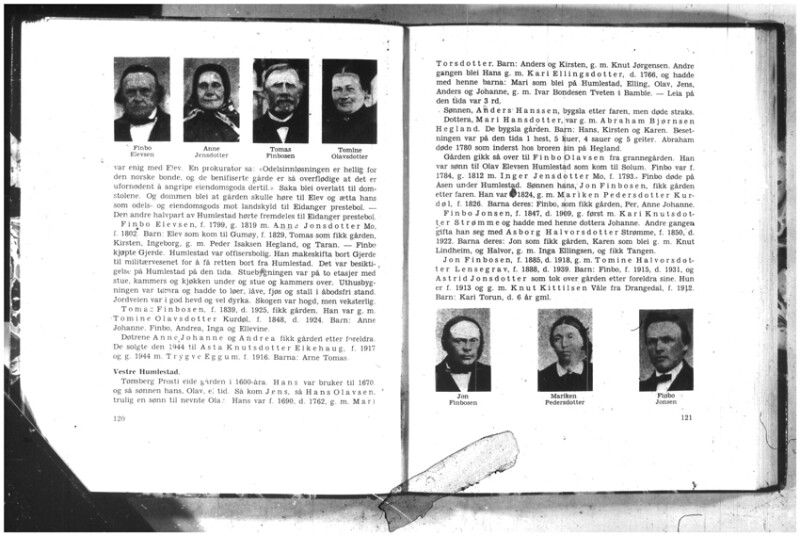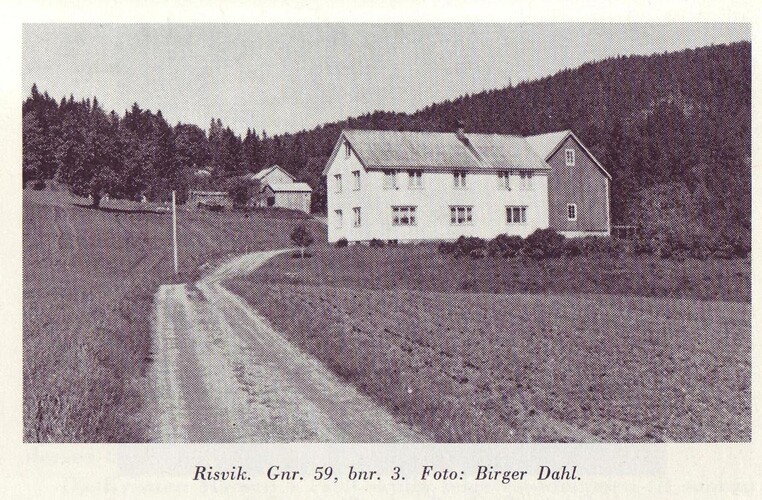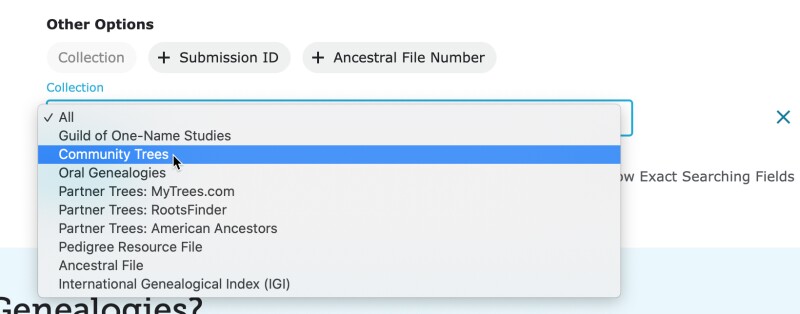Are you looking for ancestors and bumping up against brick walls? If you are fresh out of leads, consider taking a look at the Community Trees projects on FamilySearch.
FamilySearch Community Trees has hundreds of projects containing millions of people from places around the world. Customary searches in historical records don’t tap into them, and computer algorithms won’t display record hints for them in the FamilySearch Family Tree.
One or more may have the breakthrough you are looking for.
What is a Community Tree?
In simple terms, a community tree is a lineage-linked genealogy based on reliable record sources, similar to a family tree. Just like a family tree tells you about the members of a family and how they are related, a community tree nests individuals and their family trees underneath a common location and time period. This helps you understand how certain people and places are connected and helps genealogists understand more about the families that lived there.
One way to go about searching for ancestors in millions and millions of names is to look at a specific portion of the trees, by location, name, date, or relationship, combining search criteria in logical ways. Community trees are a fantastic tool to help do this, delivering more potential sources for early records and, where possible, additional ways to compare records for accuracy once they are compiled into searchable trees with family associations.

What Can I Expect to Find in Community Trees?
In community trees you will find carefully researched records for individuals and relationships. Consider the community trees specialized sources after consulting mainstream genealogical resources such as censuses, parish records, and civil registrations.
Some community trees will have more or less information depending on the sources. Some are complete, and some will be ongoing projects for many years.
Community Tree Projects
Community trees projects on FamilySearch are lineage linked or partial family trees based on reliable record sources. A single project may have numerous trees for one geographic locality. Depending on the scope, a project might include people in a small village, an entire parish, a region, or a whole country. The project source could be a specific collection of records in possession of a historical society or genealogical organization spanning a few or many years.
Our community tree projects are joint ventures between FamilySearch, partner organizations, and participants with special expertise with specific types of records. Because community trees include source citations, they are generally high-quality collections that have less duplication and fewer errors than other projects. Community trees are a wonderful resource often underutilized by genealogists and family historians.
Norway Community Tree
One example of an ongoing project is for Norway. This community tree project exemplifies how powerful these trees can be for discovering specific ancestors. The records are extensive and built from years-long efforts to reconstruct families from the genealogically valuable bygdebøker, or farm books. Darris Williams, project manager for the Community Trees projects at FamilySearch, shared, “These records in community trees may be the most direct route to finding your ancestor in Norway.”

Medieval Welsh Community Tree
If you are looking at very early records and have evidence your lines tie into Welsh nobility, the Welsh medieval database has data for approximately 350,000 individuals living between AD 100 and the 1800s.
Pacific Islands Community Tree
The Cole Jensen collection contains extracted information from microfilm by the Genealogical Society of Utah. This is one of the best sources of compiled genealogies for Pacific Island ancestors.

How Are Community Trees Updated?
Community trees are growing and changing. At FamilySearch, there are a large number of quality, well-researched community trees ready to be explored. These trees are moderated by database managers at FamilySearch, ensuring all records are as accurate as possible.
Darris Williams states that, “Community trees are kept separate from other genealogies. Unlike user-submitted trees, nobody can change or update them. That’s all done by FamilySearch.”
“They are accessible, protected trees based on good source material. If FamilySearch needs to make changes to update them or add more names, they can do so. No individual can come in behind FamilySearch experts and make spurious changes.”
Database managers at FamilySearch have developed ways to convert datasets in earlier, incompatible formats into the GEDCOM format, which integrates with the present view of community trees and is a standard for genealogical information exchange. Additionally, FamilySearch periodically refreshes a whole database for a project to add more records as research makes more data available.

One joint project currently being rolled out is based on records from the Mayflower Society. When the project is complete, it will have searchable pedigrees for all known descendants of the Mayflower passengers. According to Darris Williams, that project will be a compilation of some 500,000 individuals!
Search the Mayflower database directly by name or see what is currently compiled in the Mayflower project in Community Trees.
How to Search Community Trees Using FamilySearch
If you’re completely new to community trees, take a look at our helpful resources on how to search genealogies, and learn how they work! We also have a guide covering how to search oral genealogies.
1. Filter Collection Types for “Community Trees”
Recent changes have added new search capabilities for community trees. From the main menu on FamilySearch.org, select Search and then Genealogies. When the interface opens, scroll to the bottom of the Search tool, and pick Collections from “Other Options.” From the drop-down list of collection types, select Community Trees to look only at community trees projects.

2. Choose Exact Matches versus Phrase Matches
On the search screen, decide if you want to show exact matches. Exact matches will mean fewer records to sift through if you are looking at huge datasets, but that setting can also limit potential matches. The exact option, however, is customizable as shown in the tip text that pops up. If you are deliberate and careful, you can use the search tool to more quickly search for and find what you are looking for.

3. Explore the FamilySearch Wiki, and View Community Tree Projects by Location
There is another way to search if you already know a lot about the location where your ancestors came from. You can go to the Research Wiki and search for Community Trees Projects to open the list of projects alphabetically by location. Pick a region and then a record set to search an individual project. The same search tool is used to search a single project within community trees.
Use Community Trees to Bring New Life to Your Genealogy Research
Behind-the-scenes efforts are making a difference at FamilySearch. Research specialists working on various projects around the world are paving the way for you to find your ancestors more quickly and easily.
The next time you are struggling on your search for ancestors, or to expand a family tree, view our community trees collection, or browse the community trees list in the wiki to discover new leads and missing links for your ancestors!

